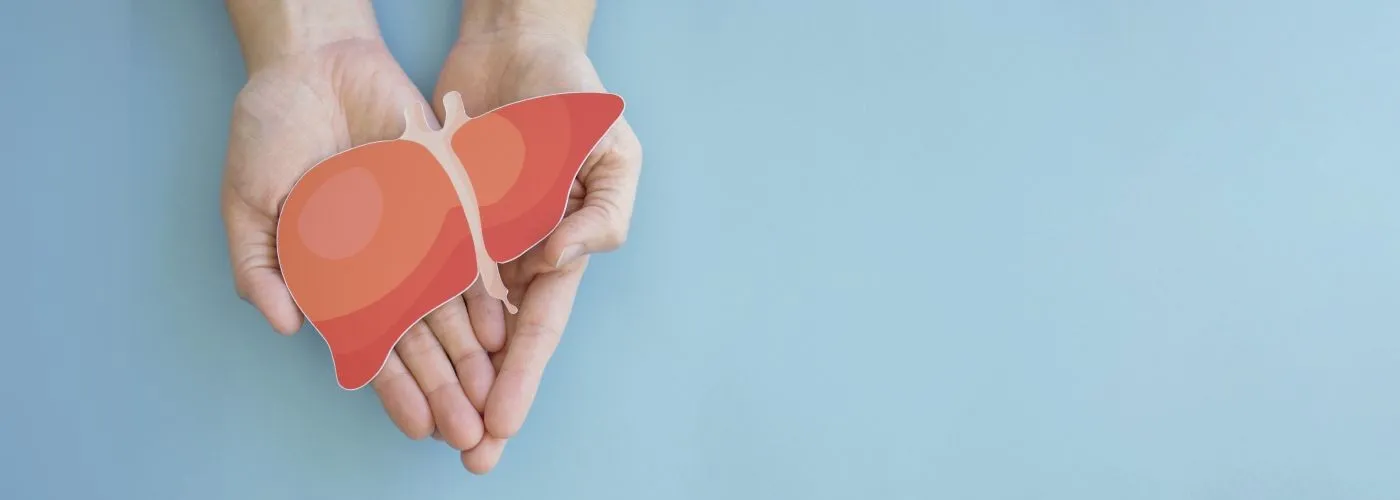Topics
What Is Fatty Liver Disease?
Fatty liver disease occurs when excess fat builds up in the liver. This condition is typically classified into two types: non-alcoholic fatty liver disease (NAFLD) and alcohol-related fatty liver disease (ARFLD). Both types can be influenced by lifestyle, genetics, infections, or underlying medical conditions.
In NAFLD, fat accumulates in the liver of individuals who drink little to no alcohol. It is frequently associated with obesity, insulin resistance, high blood pressure, high cholesterol, and type 2 diabetes. On the other hand, ARFLD is caused by excessive alcohol consumption over time, leading to inflammation and liver damage.
Some individuals develop fatty liver disease as a result of medications, infections like hepatitis C, or genetic metabolic disorders. Rapid weight loss, exposure to toxins, and even pregnancy may also contribute to its development.
Who Would Be at Risk for Fatty Liver Disease?
Fatty liver disease can affect anyone, but some individuals are at significantly higher risk due to genetic, lifestyle, or medical factors.
Obesity and Overweight
People with excess body weight—especially abdominal fat—have a greater chance of developing fatty liver disease. This is one of the strongest risk factors for both NAFLD and ARFLD.
Type 2 Diabetes and Prediabetes
High blood sugar and insulin resistance are closely linked to fatty liver accumulation. Individuals with these conditions should monitor their liver function regularly.
Metabolic Syndrome
Those diagnosed with metabolic syndrome—which includes high blood pressure, high triglyceride levels, and abdominal obesity—face a significantly increased risk.
High Blood Pressure, Cholesterol, and Triglycerides
Elevated levels of these indicators can damage the liver over time and contribute to fat buildup.
Certain Medications
Drugs such as corticosteroids, cancer treatment agents, and some antiviral medications may cause fat accumulation in the liver as a side effect.
Certain Infections
Chronic hepatitis C and other infections can lead to liver inflammation and fat deposits.
Rapid Weight Loss
Losing a large amount of weight quickly may shock the liver and cause a temporary or prolonged fatty liver condition.
Age
While fatty liver disease can occur at any age, it is more common among middle-aged and older adults.
Ethnicity
Research indicates that Hispanic populations are at the highest risk, followed by non-Hispanic whites and Asian Americans.
Family History
A family history of fatty liver disease or other metabolic disorders can also raise an individual’s risk.
What Are the Symptoms of Fatty Liver Disease?
Most people with fatty liver disease have no symptoms in the early stages. This makes it important to monitor your liver health if you are at risk, even if you feel fine.
Fatigue and Malaise
General tiredness and a sense of unwellness are common among those with fatty liver disease, especially as the condition progresses.
Abdominal Pain
Some may experience mild to moderate pain or discomfort in the upper right part of the abdomen, where the liver is located.
Unexplained Weight Loss
Ongoing, unintended weight loss can be a sign of liver dysfunction and should not be ignored.
Jaundice
Yellowing of the eyes and skin may signal a more advanced liver condition.
Bruising and Bleeding
The liver helps produce proteins that aid blood clotting. Liver dysfunction can lead to easy bruising or prolonged bleeding.
Dark Urine and Pale Stools
Changes in urine and stool colour may occur due to impaired liver function.
Itchy Skin
As bile builds up in the bloodstream due to liver damage, it can lead to skin irritation and itchiness.
Nausea and Vomiting
Some people may experience nausea or vomiting, particularly if fatty liver progresses into inflammation or liver disease.
How Can You Prevent Fatty Liver Disease?
Preventing fatty liver disease is achievable through lifestyle changes and proactive health management. Whether you are at risk or looking to avoid complications, these preventive strategies can help:
Healthy Diet
Focus on eating plenty of fruits, vegetables, whole grains, lean protein, and healthy fats. Minimise processed foods, sugary drinks, and fried or high-fat items.
Weight Management
If you are overweight or obese, gradual and sustained weight loss through healthy habits is key to reducing liver fat.
Regular Exercise
Engage in at least 150 minutes of moderate physical activity weekly. This includes walking, cycling, swimming, or any movement that increases your heart rate.
Limit Alcohol
Excessive alcohol is toxic to the liver. Even moderate consumption can worsen pre-existing fatty liver. Avoid or minimise alcohol intake to reduce your risk.
Diabetes Management
If you have diabetes, control your blood sugar levels through diet, exercise, and medication. Uncontrolled diabetes significantly increases the risk of fatty liver complications.
Manage Cholesterol and Blood Pressure
Keep these within healthy ranges through diet, medication (if prescribed), and regular check-ups.
Protect Your Liver
Avoid over-the-counter medications or herbal supplements that may damage the liver. Always follow dosage instructions and consult a doctor before starting new medications.
Consider Supplements
Some supplements like omega-3 fatty acids or vitamin E may support liver health. However, you should only use them under medical supervision.
Frequently Asked Questions about Fatty Liver Disease
1. Can fatty liver disease go away on its own?
Yes, especially in early stages. Lifestyle changes like weight loss, healthy eating, and regular exercise can reverse fatty liver disease in many cases.
2. Is fatty liver disease dangerous?
While it may start harmlessly, fatty liver can progress to more serious conditions like liver fibrosis, cirrhosis, and liver failure if untreated.
3. Is it possible to have fatty liver without being overweight?
Yes. Some people develop fatty liver due to genetics, medications, infections, or metabolic issues, even if they are not overweight.
4. How is fatty liver disease diagnosed?
Diagnosis typically involves a combination of blood tests, imaging (such as ultrasound), and sometimes a liver biopsy to assess the extent of damage.
5. Can children get fatty liver disease?
Yes. Due to rising obesity and sedentary lifestyles, fatty liver is increasingly being diagnosed in children and adolescents.
Book an Appointment at Pantai Hospitals
Fatty liver disease is increasingly common—but it is also largely preventable and, in many cases, reversible. The key lies in early recognition and sustained lifestyle modifications. Maintaining a healthy weight, adopting a nutrient-rich diet, staying physically active, limiting alcohol, and managing chronic conditions like diabetes or high blood pressure are essential components of liver care.
Understanding your risk is the first step toward prevention. Whether due to family history, underlying health issues, or lifestyle factors, knowing where you stand enables you to take timely action. Routine check-ups, screenings, and professional advice are invaluable tools in keeping your liver healthy and functioning at its best.
If you or someone you love is at risk or experiencing symptoms of fatty liver disease, do not delay. Expert evaluation and personalised support are available at Pantai Hospitals, a trusted provider of liver care and chronic disease management. Book your appointment with Pantai Hospitals today and take proactive steps to protect your liver and overall health. You may also book an appointment via our website or download the MyHealth360 application from the Google Play Store or Apple App Store.
Pantai Hospitals have been accredited by the Malaysian Society for Quality in Health (MSQH) for its commitment to patient safety and service quality.







